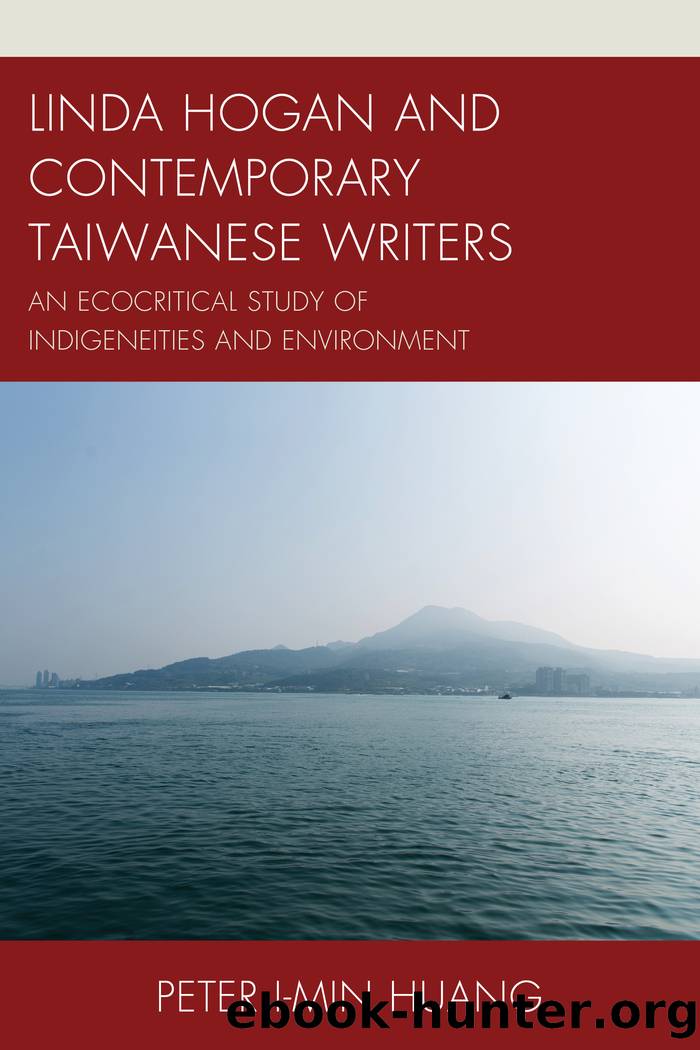Linda Hogan and Contemporary Taiwanese Writers by Huang Peter I-min;

Author:Huang, Peter I-min;
Language: eng
Format: epub
Tags: undefined
Publisher: Lexington Books/Fortress Academic
Published: 2012-08-15T00:00:00+00:00
Mega Dams in Taiwan
The scenes in Solar Storms that refer to the effort by industrialists to build a dam in Cree territory connect to ecofeminist and new materialist ecocriticism arguments that one cannot separate issues of ecocide from issues of genocide. The scenes also bring attention to the roles that mega dams play in the privatization of and the control of access to the planetâs dwindling supplies of potable water. A recent news article, âUN warns over water problemsâ (2012), summarizes the main points of the World Water Development Report, a document that the United Nations releases every three years: â[P]opulation growth and a shift to more-intensive meat diet will drive up demand for food by some 70 percent by 2050â and the consumption of water for agricultural purposes will increase by 20 percent within the next forty years. Already, the worldâs aquifers are in danger of becoming dry. Within the last fifty years, industrial abstraction of these deep underground natural water reservoirs, which âsupply nearly half of all drinking water today,â has tripled, and this abstraction shows no signs of abating.[7]
Patrick D. Murphy discusses the problem of water waste and water scarcity in a monograph entitled Transversal Ecocritical Praxis: Theoretical Argument, Literary Analysis, and Cultural Critique (2013). Expanding on an argument that he makes in âDamning Damming Modernityâ (2011), one of the chapters of Transversal Ecocritical Praxis: Theoretical Argument, Literary Analysis, and Cultural Critique (2013), he argues that the industrialists who designed and pushed for the great dams that were constructed in the twentieth century never intended those reservoirs to serve mainly as a source of water for domestic and agricultural use; rather, they intended the dams to serve primarily as hydropower for big industry, and in building these dams, they wasted rather than conserved copious amounts of planetary water. Only 2.5 percent of the Earthâs water is âfresh, rather than salt, waterâ (Murphy 2013, 139). Most of this until very recently was locked up in glaciers and icecaps. Although humans have been trapping water for domestic and agricultural use by building dams for more than four thousand years, after the nineteenth century, their dam constructions âentered an entirely new phaseâ (140). Dam construction âdramatically acceleratedâ and no longer reflected older uses of dams (140). Governments started to harness water not only for agricultural and domestic use but also for the generation of hydroelectric power (140). In addition, the sizes of dams increased greatly after the nineteenth century. These have put industrialized and industrializing countries on profoundly environmentally unsustainable courses. In some cases, governments have decommissioned mega dams that were built in the last century. Murphy points to the example of the dams around the Columbia River in the U.S. Pacific Northwest (141). In many other cases, governments continue to engage in a frenzy of mega dam building, radically altering âthe face of entire regionsâ and âinundating areasâ after forcing local human populations to relocate (141).[8]
Many of the newest mega dams are being constructed in China and other countries in Asia (Murphy 2013, 141).
Download
This site does not store any files on its server. We only index and link to content provided by other sites. Please contact the content providers to delete copyright contents if any and email us, we'll remove relevant links or contents immediately.
The Power of Myth by Joseph Campbell & Bill Moyers(697)
Four Shakespearean Period Pieces by Margreta de Grazia(694)
A Social History of the Media by Peter Burke & Peter Burke(645)
Inseparable by Emma Donoghue(616)
The Complete Correspondence 1928-1940 by Theodor W. Adorno & Walter Benjamin(515)
Bodies from the Library 3 by Tony Medawar(489)
The Spike by Mark Humphries;(477)
A Theory of Narrative Drawing by Simon Grennan(471)
Culture by Terry Eagleton(470)
World Philology by(458)
Ideology by Eagleton Terry;(456)
Farnsworth's Classical English Rhetoric by Ward Farnsworth(448)
A Reader’s Companion to J. D. Salinger’s The Catcher in the Rye by Peter Beidler(434)
Adam Smith by Jonathan Conlin(427)
Comic Genius: Portraits of Funny People by(415)
Game of Thrones and Philosophy by William Irwin(405)
Monkey King by Wu Cheng'en(405)
High Albania by M. Edith Durham(401)
Early Departures by Justin A. Reynolds(386)
